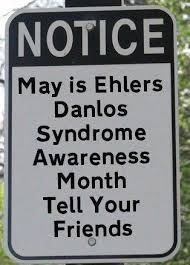The fully accessible guide to training an emotional support dog
Created by
This article was reprinted with permission from this author .
The complete article is available at this link


Covered in this guide
- The lowdown on emotional support dogs: what they are, how they differ from service dogs, who should get one, and how to certify them.
- Breeds/types of dogs that make the best emotional support dogs.
- Everything you need to know about training your emotional support dog. This includes obedience training, emotional training, and socialization.
- Advice for flying/traveling with your emotional support dog.
What exactly is an ESA (emotional support animal)
An emotional support animal can be a dog, pig, monkey — even a miniature horse that helps humans that are struggling emotionally. In order to be an ESA, a licensed therapist must deem it as such. These animals have specific rights that differ from both service dogs and regular pets:
- They’re protected under the Fair Housing Act.
- They’re allowed to fly with owners in an airplane cabin. Currently, airlines will not allow snakes, reptiles, ferrets, rodents, sugar gliders, or spiders to fly. They will allow miniature horses onboard as ESAs. In 2020, the DOT proposed revising the species rule to only allow emotional support dogs to fly in the cabin and not all ESAs.
- A special letter from your therapist denotes your ESA.
An emotional support dog is different from a service dog
This guide is focused specifically on emotional support dogs, not service dogs. But it is helpful to understand the difference between the two. According to the ADA, emotional support dogs are very different from service animals.
- In general, emotional support dogs/animals help those with emotional/mental disabilities. Service dogs help people with any disability, performing physical tasks for their owners.
- Emotional support dogs don’t need qualifications (a pet that you already have can become your ESA). Service dogs go through special training processes and need to have specific qualifications.
- Emotional support dogs have different rights when entering public places. Service dogs can enter almost anywhere, such as a restaurant, while emotional support dogs cannot.
Who should get an emotional support dog
Dogs provide routine and consistency. This means they can help tired or unmotivated owners suffering from mental trauma or other disorders to engage in activity. Emotional support dogs are apt for people suffering from the following mental health issues:
- Anxiety
- Attention Deficit Disorder (ADD)
- Autism
- Bipolar/Manic disorders
- Cognitive disorders
- Depression
- Phobias
- Post Traumatic Stress Disorder (PTSD)
- Stress
You must prove the ESA’s support is necessary for your daily functioning when attempting to get one certified.
How to get an ESA letter
If you have one of the above conditions or something similar, speak to a mental health professional. You can ask them for a letter to certify your pet as an emotional support dog. This letter must have the following:
- Be prescribed by a licensed mental health professional
- Written on official letterhead
- Include details like therapist’s contact info, signature, and license number
This letter can serve as proof of your emotional support dog’s presence in a few key situations:
- Flying. Airlines typically won’t let your pet travel in the cabin with you if they’re large unless you have this letter.
- Renting a home. Landlords and homeowners associations must allow ESAs to live with their owners, regardless of their rules on pets. If you run into an issue with this, you have the right to file a discrimination complaint with the Department of Housing and Urban Development
- Avoiding fees. The Fair Housing Act and the Air Carrier Act state that ESA owners can be exempt from certain fees charged for pets when renting a living space or flying. But, if pets do cause any damage, extra fees may incur.
It’s important to note that the ESA letter won’t help when entering establishments like hotels or restaurants. These businesses can deny entry to your pet regardless of ESA certification.
Keep an eye out for fake registrations or certifications. ESA letters must always come from a licensed therapist. Be especially careful when obtaining an ESA letter online, which is where a majority of fake letters or scams can occur.
There are varying types of letters: for housing, for travel, or for both. Make sure to note if or how often they need to be renewed. Airlines also may ask for additional documentation, but more on that in the section about flying below.
What types of dogs make the best ESAs (and why)?
An emotional support dog should be calm, socially adapted (with both humans and other pups), and know basic commands. They shouldn’t be shy, overly excitable/wild, bark too much, or jump/bite people.
Some dog breeds are more apt to be emotional support dogs or companion animals. Dogs with characteristics like being gentle, obedient, calm, and loving make excellent ESAs. Here are some of the best breeds suited to be ESAs:
- Golden retrievers are loyal and lively, just make sure to give them enough exercise.
- Labrador retrievers are gentle and obedient, making them easy to train.
- German shepherds are friendly and intelligent.
- Beagles are loving and calm, but also playful.
- Poodles are smart, and thus train well.
- Yorkshire terriers are small and affectionate lap dogs that don’t need much exercise.
- Collies are sensitive and intuitive to their owners.
- Cavalier King Charles spaniels are loyal and loving.
- Pomeranians love to snuggle and make excellent lap dogs.
- Pugs are small, but with big hearts.
- Corgis are affectionate and friendly.
Emotional support dogs aren’t required to be trained by a specific set of guidelines like service dogs are. But, there are a few rules they should follow. The ADA requires ESAs to:
- Be under the control of handlers (best done with a leash)
- Be housebroken (don’t worry, we’ll get to training soon)
- Have the proper vaccines as per state/local laws.
Step-by-step obedience training for your emotional support dog
Make sure to have plenty of treats, a leash, and your dog’s bed or mat on hand when emotional support dog training. You can teach your dog endless commands, but these are some of the most important.
1. Start with potty training
- Create a routine (feeding and bathroom). Puppies typically can control their bladders one hour for every month of age, so depending on their age, take them outside accordingly. Try to follow your puppy’s schedule by keeping track of when they actually go.
- It’s all about consistency: take your pup to the same spot outside each time.
- Restrict your dog to specific areas of the house to avoid accidents.
- Reward your puppy with treats, love, and praise when they do their business outdoors. Likewise, don’t freak out if they go inside. Just clean things up, and keep taking them outside.
- Take away their water dish a couple of hours before bedtime. Puppies can usually hold it twice as long at night, but taking away water will help too.
The complete article with videos is available at this link
Happy training!
MORE ARTICLES ABOUT TRAINING DOGS
Recent article on Training a Service Dog
Click here for more information about funding a service dog
Click here for more information from your “Dog Advisor”
More articles about service dogs for those struggling with EDS




























this is a very useful article thanks for sharing this information it is a very useful sitegastrointestinal disorders treatment in delhi